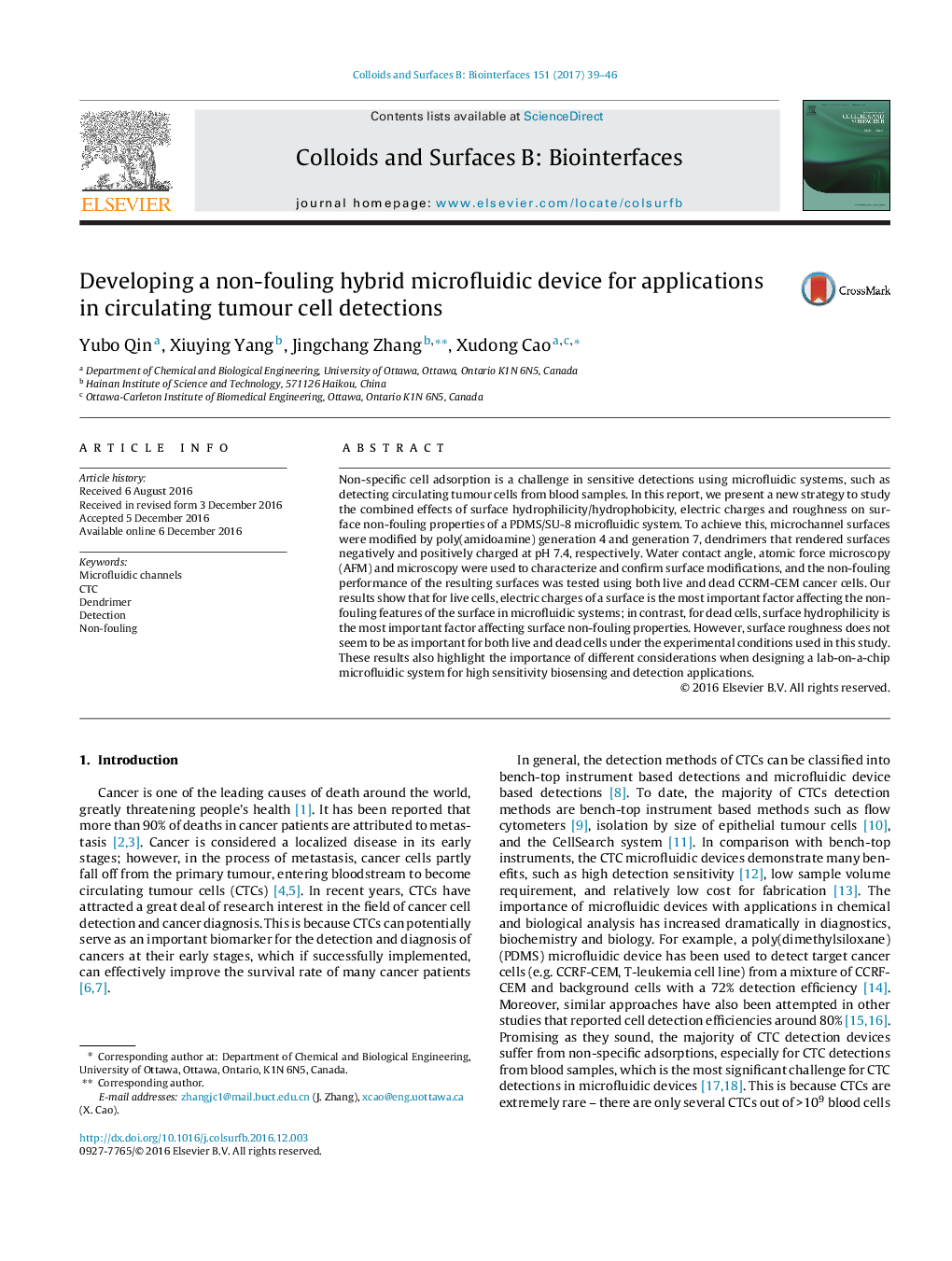| کد مقاله | کد نشریه | سال انتشار | مقاله انگلیسی | نسخه تمام متن |
|---|---|---|---|---|
| 4983207 | 1454253 | 2017 | 8 صفحه PDF | دانلود رایگان |
- Studied effect of hydrophobicity, electric charge and roughness on cell adhesion.
- For live cells, electric charge is the most important factor for cell adhesion.
- For dead cells, hydrophobicity is the most important factor for cell adhesion.
- For both live and dead cells, roughness does not seem to be as important.
Non-specific cell adsorption is a challenge in sensitive detections using microfluidic systems, such as detecting circulating tumour cells from blood samples. In this report, we present a new strategy to study the combined effects of surface hydrophilicity/hydrophobicity, electric charges and roughness on surface non-fouling properties of a PDMS/SU-8 microfluidic system. To achieve this, microchannel surfaces were modified by poly(amidoamine) generation 4 and generation 7, dendrimers that rendered surfaces negatively and positively charged at pH 7.4, respectively. Water contact angle, atomic force microscopy (AFM) and microscopy were used to characterize and confirm surface modifications, and the non-fouling performance of the resulting surfaces was tested using both live and dead CCRM-CEM cancer cells. Our results show that for live cells, electric charges of a surface is the most important factor affecting the non-fouling features of the surface in microfluidic systems; in contrast, for dead cells, surface hydrophilicity is the most important factor affecting surface non-fouling properties. However, surface roughness does not seem to be as important for both live and dead cells under the experimental conditions used in this study. These results also highlight the importance of different considerations when designing a lab-on-a-chip microfluidic system for high sensitivity biosensing and detection applications.
The combined effect of surface hydrophilicity/hydrophobicity, electric charges, and roughness was studied to prevent non-specific adsorption of live and dead cells in microfluidic channels.135
Journal: Colloids and Surfaces B: Biointerfaces - Volume 151, 1 March 2017, Pages 39-46
